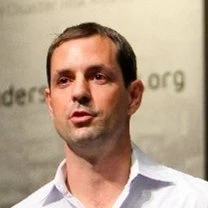Natural disasters made 2017 a very expensive year.
At $330 billion, last year’s global losses from disasters set a record. These economic losses were primarily a result of meteorological events, such as floods and hurricanes, which are increasing in frequency and intensity due to climate change. An increasing number of people are also exposed to tectonic risks, such as earthquakes and landslides, due to rapid urbanization.
But growing disaster losses aren’t inevitable. Policy changes, education, and good disaster risk management practices have been proven to reduce losses – and the foundation of all of them is accurate, reliable information about disaster risks.
Risk data informs resilience investments. It drives decision-making. And it’s the focus of the open, global community of disaster risk management experts and practitioners called Understanding Risk (UR), which is supported by the Global Facility for Disaster Reduction and Recovery (GFDRR).
This year, the community will convene at the Understanding Risk Forum 2018 May 14–18 in Mexico City. The Forum will highlight best practices, facilitate nontraditional partnerships, and showcase the latest technical knowledge in disaster risk identification.
It’s a critical time for a discussion of disaster risk information. A new GFDRR report, Aftershocks: Remodeling the Past for a Resilient Future, concludes that if past disasters were to repeat in the same places today, the losses would be far greater. Aftershocks, which will be discussed at UR2018, explores what we can learn from historic disasters to anticipate similar future events and build resilience ahead of time.
The good news is that the past few years have seen a surge of new ways to get more accurate, more detailed information more quickly, more easily, and in more difficult contexts. We can now use social media to gather increasingly valuable information in the immediate aftermath of an event. Drones are increasingly capturing high-quality images, and machine learning for image recognition is already helping us produce more and better risk data all the time.
These emerging technologies, including artificial intelligence and machine learning, will be one of the major themes of this year’s UR Forum. To find out more about the UR Forum, and how you can get involved, watch the video blog and visit understandrisk.org.
And don’t forget to keep up with all the great ideas coming out of #UR2018 by following along on Twitter: @UnderstandRisk, @GFDRR, and @WBG_Cities.
Related:




Join the Conversation